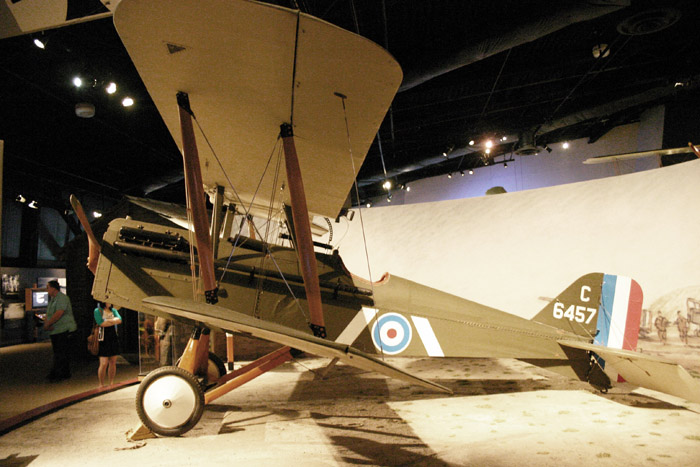| Royal Aircraft Factory | ||||||||||||
|
S.E.5.a # |
||||||||||||
 |
||||||||||||
|
Photo: Robert Deering 9/3/2011 Museum of Flight King County International Airport (BFI) Seattle, Washington |
||||||||||||
|
One of the best Allied fighters of World War I, the S.E.5 was considered fast, strong, and simple to fly. Flyers who commonly had nothing good to say about the designs of the Royal Aircraft Factory, had to admit that the S.E. was pleasantly different.
Though well-liked, the S.E. still had its quirks -- flyers found that the fighter was difficult to land, or at least, difficult to land in one piece. The S.E.5 wasn't as maneuverable as the Camel but was much more faithful, with docile handling characteristics that wouldn't kill a novice airman.
In the improved version, the S.E.5a, designers continued to amend annoyances and create one of the war's most venerable fighting machines. Many of Britain's most famous aces, including Mannock, Bishop, and McCudden, flew the S.E.5a into combat.
The Museum's S.E. was one of three aircraft reproductions began by Bobby Strahlmann, Tom Davis, and Gil Bodine in Florida in 1971. It has a Hispano-Suiza 8B water-cooled V-8 power plant along with one .303 Vickers and one .303-caliber Lewis machine gun This aircraft was completed in 1988 and carries the paint scheme of American ace George Vaughn, who served with the Royal Flying Corps. |
||||||||||||
|
||||||||||||